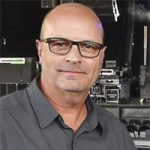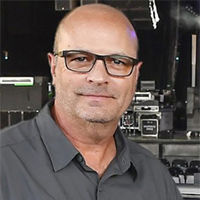In previous editions, we’ve explored building a solid foundation for the overall mix by fine tuning drums and bass (here), as well as using techniques and tricks to achieve great sounding vocals (here) that sit nicely on top.
Here we’re going to look at everything that happens in the mix between the foundation and the vocals. It’s the peanut butter and jelly between two slices of bread, and it’s extremely important if you want the song to sound musical and powerful. The instruments that live in this area will give the song its musicality and key signature and encourage people to sing along, so let’s explore how we can wrangle all this musical information together so that all the instruments are clearly heard and identified yet working together to form a beautiful “musical middle.”
Depending on the size of the worship band there can be a lot going on between the drums and vocals. Guitars (electric and acoustic), keyboards (pianos, synth pads and organs), strings and horns (real or synthesized), and now more often than not, playback tracks. Many of these instruments have similar frequency ranges and tonalities, and they have a tendency to build up in the center of the mix, making it hard to hear the separation between each instrument (not to mention the vocals). And all of this can occur before the playback tracks are even un-muted! Fortunately, there are three tools we can use to assist with managing the busy intersection of all this instrumentation.
HPF & EQ
One element that can cause a lot of clutter in the mix is excessive low-end buildup, and if there is a heavy low-frequency “tilt” in the frequency response of the sound system, this issue is almost a certainty. Starting with a powerful drum and bass guitar sound, it can feel like a losing battle keeping it clean as you start to add piano and electric guitars to the mix. The “muddiness” can start to overtake the clear musicality of the instruments, so effectively using the HPF (high-pass filter) control on each input is a great ally at this stage.
If it feels like the drums and bass are sitting in the right place – big and punchy but not overpowering – start adding other full-frequency instruments to the mix one at a time while focusing in on the lower frequencies. We all want these instruments to sound full and thick, but not muddy or boomy. Remember that you’ll be bringing a lot of these instruments together, so play it a bit safe as you begin and clean up the low-end enough to allow space for other instruments.
Piano should receive a similar treatment. Lower chords on a grand piano and big synth and string pads can often overtake and “cloud” the low-mid and low-end of the mix, so begin by layering the instruments cautiously where low frequencies are concerned. Adjust each instrument’s HPF so that the overall low-end spectrum of all the instruments together is well balanced and not overwhelming. (For more on HPF, be sure to check out Mike Sessler’s article here.)
Now it’s time to apply some selective equalization (EQ) to create separation in the instruments. If the band has thick keyboard pads and a full-sounding piano, try cutting a touch of low-mid from the guitars to let their high-mid content jump out of the mix.

I’m not talking about taking all the fullness out of the electric guitar sound as that can leave it sounding bright and brash, but find a frequency area that’s lacking in the keyboards and feature that with the electric guitars so they have a place to live in the mix. This technique works for multiple guitar players as well. If the sound coming out of each player’s amp or amp modeler (Fractal/Kemper) is almost identical, try using a touch of “differentiating EQ” to help each instrument achieve separation while still blending well with the other guitar for the best final outcome.
Panning
Using the pan control to move all these instruments out of the center (where the lead vocal lives!) and into a nice little spot all its own is a highly effective way to create separation, depth and fullness to a mix. Like many useful techniques in live audio, a word of caution should be noted with the use of panning. Depending on the physical configuration of a sanctuary/auditorium, some audience members may be sitting far to the right or left of dead center, so panning the acoustic guitar all the way over to one side may create a situation where the other side of the audience isn’t hearing it at all, so think about that as you paint your picture with all of the instruments.
I like to use “visual common sense” when panning instruments. If I’m looking at the stage and one guitar player is standing quite far off center, house left, and the acoustic guitar player is positioned onstage of this player, I pan their instruments to match what I’m looking at. My goal is to find space between the Center (0-pan) and fully left or right (100-pan) to spread the instruments out in the stereo field. Pay attention and keep track of some of the values of the pan control as you’re placing things.
Here’s an example: If there are four background vocalists and you’ve panned them to 30-left and 60-left, 30-right and 60-right, try placing the acoustic guitar that is house left at 45-left and the electric guitar that is far offstage house left at 75-left. You can now alternate with the other guitar player and place that instrument at 75-right.

Just keep in mind that if one of the guitar players starts the song or performs a guitar solo or highlighted riff, you may need to bring it back to center for those song segments so it doesn’t sound too odd. However, when both guitars are playing at the same time, the wider panning creates fantastic space, width and movement in your mix.
FX
Another way to add character and auditory separation between instruments while creating a pleasing blend in the mix is to apply small doses of certain effects (FX). Reverb and chorus are fantastic tools to add to certain instruments to “take the edge off” and help them mesh in a wonderful way. Try adding a touch of chorus or harmonizing to the acoustic guitar to soften the attack and pull it back into the mix just enough that it’s still clearly heard, but not poking out.
A similar technique can be applied to piano and brass instruments using a little bit of hall reverb. An inconspicuous amount of short, dark hall reverb added to a piano can be nice if the musician is playing it without a lot of “pedal reverb”. I often add a bit of delay and reverb to live or synthesized horns such as trumpets and trombones to add texture and take the “bite” out of them.
Remember to use the HPF on the effects returns to aid in reducing low-end buildup and think about also using the LPF (low-pass filter) to keep the highs smooth and warm on the FX returns.




















